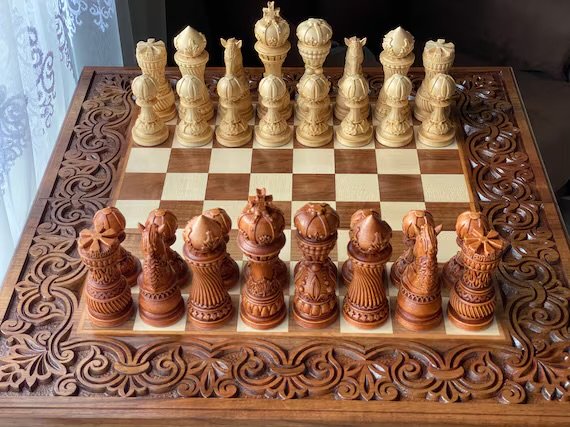Chess game
How to Play Chess
Setting Up the Board
• Place the board so that each player has a light-colored square in the bottom right corner.
• Arrange the pieces as follows:
• Rooks go in the corners.
• Knights next to the rooks.
• Bishops next to the knights.
• Queens go on their matching color (White Queen on a light square, Black Queen on a dark square).
• Kings go on the remaining squares.
• Pawns are placed in a row in front of the other pieces.How the Pieces Move
• Pawn: Moves one square forward, but captures diagonally. On its first move, it can move two squares forward.
• Rook: Moves horizontally or vertically as far as possible.
• Knight: Moves in an L-shape (two squares in one direction, then one square perpendicular). It can jump over other pieces.
• Bishop: Moves diagonally any number of squares.
• Queen: Moves like a rook and a bishop combined (any direction, as far as possible).
• King: Moves one square in any direction. Special move: Castling (see below).Special Moves
• Castling: A move that involves the king and a rook. The king moves two squares towards the rook, and the rook jumps over the king. Conditions:
• No pieces between the king and rook.
• Neither the king nor the rook has moved before.
• The king is not in check, passing through check, or landing in check.
• En Passant: If a pawn moves two squares forward and lands beside an opponent’s pawn, the opponent can capture it as if it had moved only one square forward, but only on the next turn.
• Pawn Promotion: When a pawn reaches the opposite end of the board, it must be promoted to a queen, rook, bishop, or knight (usually a queen).How to Win
• Check: The king is under attack. The player must move the king or block the attack.
• Checkmate: The king is in check and has no legal moves. The game ends, and the player in check loses.
• Stalemate: A player has no legal moves, but their king is not in check. The game is a draw.
• Draw can also occur by:
• Insufficient material (not enough pieces to checkmate).
• Threefold repetition (same position occurs three times).
• 50-move rule (50 moves without a pawn move or capture).
Would you like some beginner tips or strategies?
